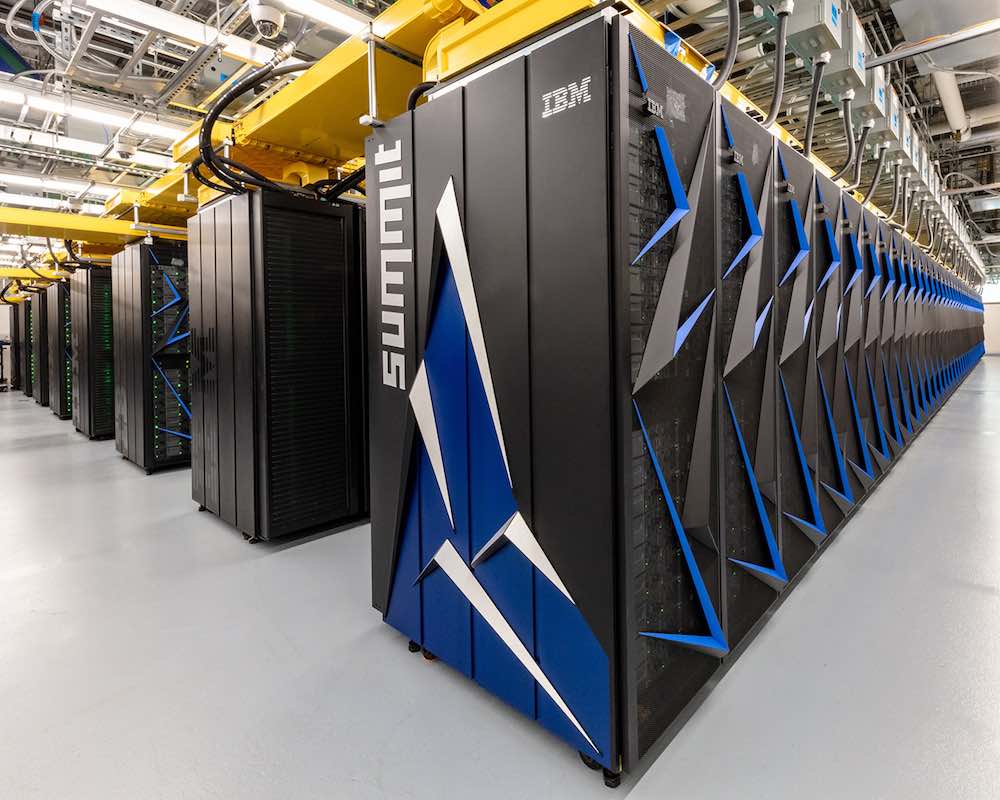If you had access to the world’s #1 supercomputer, what would you do? Figure out whatever happened to the legendary PROMIS software developed for the U.S. Department of Justice? Predict the impact of an imminent financial collapse due to multiple simultaneous market failures due to the climate crisis? Me too.
Well, the team at GE Research had other plans in mind when the U.S. Department of Energy (DOE) selected a GE project among 47 winners in the 15th year of its Innovative and Novel Computational Impact on Theory and Experiment (INCITE) program. The project? Find new methods for optimizing jet engine and power generation efficiency with 3D printing.
The INCITE program allows science and engineering projects to use some of the country’s powerful supercomputers from such labs as Oak Ridge, Argonne, and Sandia National Laboratories to perform advanced calculations, simulations and other operations with the goal of making new scientific and technological discoveries. This, in turn, is meant to increase U.S. competitiveness in the global market. The processing power and time offered by supercomputers like Titan and Summit at Oak Ridge National Laboratory and Sierra at Lawrence Livermore National Laboratory are roughly the equivalents of running 10,000 computer processors simultaneously for over 9 months.

An image created on the Intrepid computer network at Argonne National Lab during research into jet engine exhaust flow. Image courtesy of GE Research.
In the case of GE Research, the project team, led by Michal Osusky, will positively impact GE’s design of gas turbines, which drive aircraft engines and the power generation equipment essential to GE’s Oil & Gas division. The team will leverage large eddy simulations to understand the flow physics that impact gas turbine performance. This includes: “flow mixing, boundary layer transitions, separated flows, multiscale flow structures, and coupling between high pressure turbine components.” The results of the studies will inform GE Research as it develops new, more efficient turbine designs that may ultimately lead to new, 3D printed parts.
Osusky, from GE Research’s Thermosciences group, said of the ability to use the DOE’s supercomputers, “We’re able to conduct experiments at unprecedented levels of speed, depth and specificity that allow us to perceive previously unobservable phenomena in how complex industrial systems operate. Through these studies, we hope to innovate new designs that enable us to propel the state of the art in turbomachinery efficiency and performance.”
Due to the abstract nature of the work performed using supercomputers, it may be difficult to determine exactly what impact the research being conducted with them has on society and the planet at large. After all, massively parallel supercomputers featuring tens of thousands of off-the-shelf processors only became mainstream in the 1990s.
Supercomputers play an important role in a great deal of advanced research, including quantum physics, weather forecasting and climate research, oil and gas exploration and molecular modeling, among other fields. Because they have likely influenced GE’s design work already, they will surely advance the conglomerate’s ongoing and future development.
Osusky also highlighted past partnerships with National Labs that could lead to improving the energy output of wind turbines by 5 percent, allowed GE to improve combined cycle power plant efficiency, and gave GE insight into the performance of jet engines. Previous work with the Sierra supercomputer at Lawrence Livermore National Laboratory allowed GE to test simulations of fuel injectors, which are difficult to test physically. Supercomputer simulations therefore make it possible to reduce the number of trials required to test them.

A fuel injector simulation created using the Sierra supercomputer at LLNL. Image courtesy of GE Research.
These incremental advancements in jet fuel nozzles or gas power facilities may not be enough, however, to achieve the efficiency necessary to cut global greenhouse gas emissions by 45 percent by 2030 and 100 percent by 2050, particularly when you think of the fuel efficiency achieved when flying and power generation are reduced overall. If you’re interested learning about other winners of the INCITE grants, including one related to studying climate, you can review the projects here.
Subscribe to Our Email Newsletter
Stay up-to-date on all the latest news from the 3D printing industry and receive information and offers from third party vendors.
You May Also Like
Precision at the Microscale: UK Researchers Advance Medical Devices with BMF’s 3D Printing Tech
University of Nottingham researchers are using Boston Micro Fabrication‘s (BMF) 3D printing technology to develop medical devices that improve compatibility with human tissue. Funded by a UK grant, this project...
GaeaStar and Verve Coffee Roasters Start Pilot Production of Sustainable 3D Printed Coffee Cups
Following a 2022 debut in Germany, GaeaStar, a startup based in San Francisco and Berlin, has begun US pilot production of its sustainable, disposable clay cups and bowls made with...
Meltio and Accufacture Unveil Robotic Metal 3D Printer Made in the US
Meltio has partnered with Michigan-based robotics firm Accufacture to introduce Alchemist 1, a robotic cell designed for wire-laser metal 3D printing made in the US. This new system represents a...
WASP Highlights Advances in Healthcare 3D Printing at Italy’s Exposanità 2024
WASP takes center stage at Italy’s leading healthcare expo, Exposanità 2024, demonstrating the transformative impact of its advanced 3D printing technologies on the medical sector. Known for its line of...

































